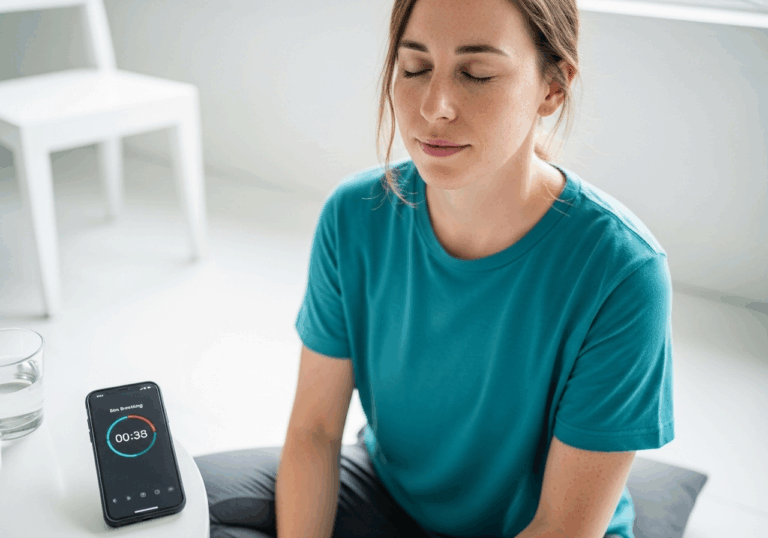Science-Backed Tips
Transform Your Mood with Resonance Breathing
30% reduction in depression symptoms with daily practice.
📊 Did you know?
💡 Why It Matters
1️⃣
A 30% decrease in depression symptoms can significantly improve daily functioning and quality of life.
2️⃣
Enhanced emotion regulation may lead to better coping strategies in stressful situations.
3️⃣
Improved neural connectivity can contribute to long-term mental health resilience.
✅ Try These Micro-Tips
🎯
Practice resonance breathing for 20 minutes each day.
🎯
Incorporate deep breathing exercises into your morning routine.
🎯
Track your mood changes weekly to observe improvements.
🎯
Join a guided session or app for structured breathing techniques.
📚 The study
This significant finding underscores the potential of HRVB in fostering sustained mood resilience.
A decrease in depression symptoms of this magnitude can dramatically enhance daily functioning and overall quality of life. Furthermore, the enhanced emotion regulation observed in participants suggests that they may develop better coping strategies when faced with stress.
The improved neural connectivity highlighted in the study points to a promising avenue for long-term mental health resilience, making HRVB a valuable tool for those seeking to improve their emotional well-being.
As we continue to uncover the intricate relationship between our physiological states and emotional health, studies like this pave the way for innovative interventions that can transform lives.
The implications of these findings are profound, offering hope to many who struggle with depression and emotional dysregulation.
By integrating practices like resonance breathing into daily routines, individuals may not only alleviate symptoms of depression but also cultivate a more resilient and balanced emotional state.
❓ Frequently Asked Questions ❓
Learn more
What is resonance breathing?
Resonance breathing is a technique that involves deep, rhythmic breathing to promote relaxation and emotional regulation. It has been shown to enhance connectivity in brain regions associated with mood regulation.
How often should I practice resonance breathing?
It is recommended to practice resonance breathing once daily for about 20 minutes. Consistent practice over five weeks can lead to significant improvements in mood and emotional well-being.
What are the benefits of resonance breathing?
Resonance breathing can lead to a ~30% reduction in depression symptoms and improved emotional regulation. Enhanced neural connectivity may also contribute to long-term mental health resilience.
How does resonance breathing affect the brain?
Resonance breathing increases connectivity between the amygdala and the medial prefrontal cortex (mpfc), which supports better mood regulation. These neural changes can help sustain mood resilience over time.
Can resonance breathing improve daily functioning?
Yes, a 30% decrease in depression symptoms can significantly enhance daily functioning and overall quality of life. Improved emotional regulation allows for better coping strategies in stressful situations.
How can I incorporate resonance breathing into my routine?
You can incorporate resonance breathing into your morning routine by setting aside 20 minutes for the practice. Using guided sessions or apps can provide structured breathing techniques to follow.
How do I track my mood changes while practicing resonance breathing?
To track mood changes, you can maintain a weekly journal where you note your feelings and any improvements. This can help you observe the positive effects of resonance breathing over time.
Is resonance breathing suitable for everyone?
Resonance breathing is generally safe and can benefit many individuals, particularly those experiencing stress or depression. However, it’s always best to consult with a healthcare professional before starting any new mental health practice.
How long does it take to see results from resonance breathing?
Participants in studies have reported significant improvements in mood and emotional regulation after practicing resonance breathing for five weeks. Consistent daily practice is key to experiencing these benefits.
What should I do if I don’t notice any improvements?
If you don’t notice improvements, consider adjusting your practice duration or seeking guidance from a professional. Additionally, combining resonance breathing with other therapeutic approaches may enhance its effectiveness.





